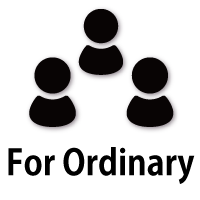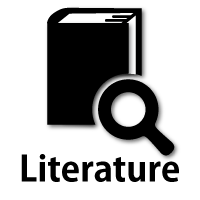Introduction
Welcome to “Muscle Disease” pages. I am Shiro Matsubara from Tokyo Metropolitan Neurological Hospital*. I have prepared this page with Dr. Nobutaka Arai and his staff who are running this pathology center at Laboratory of Neuropathology, Tokyo Metropolitan Institute of Medical Science.
The pages are divided to three parts; In the first part “For Ordinary”, divers and complicated fields of muscle diseases is outlined in simple words.
In the second part “For Medical”, people in medical and healthcare fields who are interested in muscle diseases are welcome to see important points in seeing patients, examination and making diagnoses. They are followed by outline of method of muscle biopsy and basic points to observe histopathology. Subsequently, details of each conditions are shown with figures and tables.
The third part “For Professionals” provides virtual slide showing histopathology of muscle biopsy at your command. A simple registration of viewers is asked before entering the third part.
Still photographs and virutual slides originate from muscle biopsy library of TMNH. They include biopsies sent to us from other hopitals including several Tokyo Metropolitan Hospitals, and Keio University and other university hospitals. In accordance with informed consents with patients, clinical detail is not appended to cases.
We are most grateful to patients and doctors who let us examined these biopsies.
Following staff of TMNH contributed to these pages: Drs. Takashi Komori, Kazuhito Miyamoto, Keizo Sugaya, Eiji Isozaki, Satoko Kumada and Kazushi Takahashi. Ms. Mina Hiraishi and Yoko Suzuki.
Following staff of Laboratory of Neuropathology, Tokyo Metropolitan Institute of Medical Science** contributed to these pages: Ms.Nobuko Ueki (Web coding), Ms.Tomoko Yagi (WSI making), Ms.Rika Kojima (Access analysis), Ms.Erika Seki (Server management) and Dr.Nobutaka Arai (Laboratory head).
* Tokyo Metropolitan Neurological Hospital (TMNH) was founded in 1980 by Tokyo Metropolitan Government for patients with neurological diseases.
https://www.byouin.metro.tokyo.lg.jp/tmnh/en/
**https://pathologycenter.jp/english/en_index.html
Dear Readers,
Thank you again for visiting “Muscle Diseases” page. I would like to explain my intension to publish these pages.
I have been a clinical neurologist throughout my carrier. Althougu I learnt a lot from my patients, regrettably I often was of little help for them. I intend to present these pages because I feel it is my duty to summate my experience and convey it to young colleagues, hoping some of them continue challenging muscle diseases.
For presenting these pages, I am deeply indebted to Dr. N. Arai who kindly invited me to join his pathology center project. I found the virtual slide suited for introducing muscle pathology. We both would be happy if you find it helpful.
Lastly, I must apologize to many authors of important articles which I failed to quote properly because of my limited ability to organize vast range of subjects.
With best wishes to all readers,
Shiro Matsubara
Ordinary
For those interested in muscle diseases
The muscle is the largest organ in the human body in weight. People use their muscles to move, breathe, and eat and drink. The work of muscles is controlled by the nervous system, which extends from the brain to peripheral nerves, and the muscles support important parts of our lives.
The muscles include skeletal muscles, smooth muscles, and myocardium. This site mainly describes skeletal muscle diseases, symptoms and types.
In this text, skeletal muscle is called ”muscle”.
There are three main categories in muscle diseases as described below.
- Diseases by impairing the nerves that control muscles (neurogenic muscular atrophy)
- Diseases in which the muscles themselves are impaired (myopathy)
- Diseases in which the joints between the nerves and the muscles are impaired (neuromuscular junction diseases)
In addition, these diseases are classified into more detailed diseases according to causes.
content
Medical Personnel
I will explain the muscle diseases for the medical staff.
This site has been edited for medical professionals such as doctors and laboratory technologists, or for medical students who are new to muscle diseases. Even if you are studying for the first time, you need basic knowledge about muscles. After that, I aim to explain various muscle lesions in detail. It is not always a simple content, but I would like you to study repeatedly with reference to the figures.
As the introduction part of the first half, the text about examinations and tests for people who are likely to have muscle diseases and pathological examination of skeletal muscle is presented. In the second half, muscle atrophy due to impaired control by neurons or nerves (neurogenic muscular atrophy) is described. It is followed by the diseases (myopathies), in which the muscle itself is impaired, are divided into hereditary myopathies and non-hereditary myopathies, and a comprehensive explanation of various muscle diseases is provided.
content
Introduction
Muscle biopsy
Neurogenic muscular atrophy
Hereditary myopathies
- Ⅰ.Muscular dystrophies
- Ⅱ.Congenital myopathies
- Ⅲ.Mitochondrial cytopathies
- Ⅳ.Metabolic myopathies
- Ⅴ.Other hereditary myopathies








